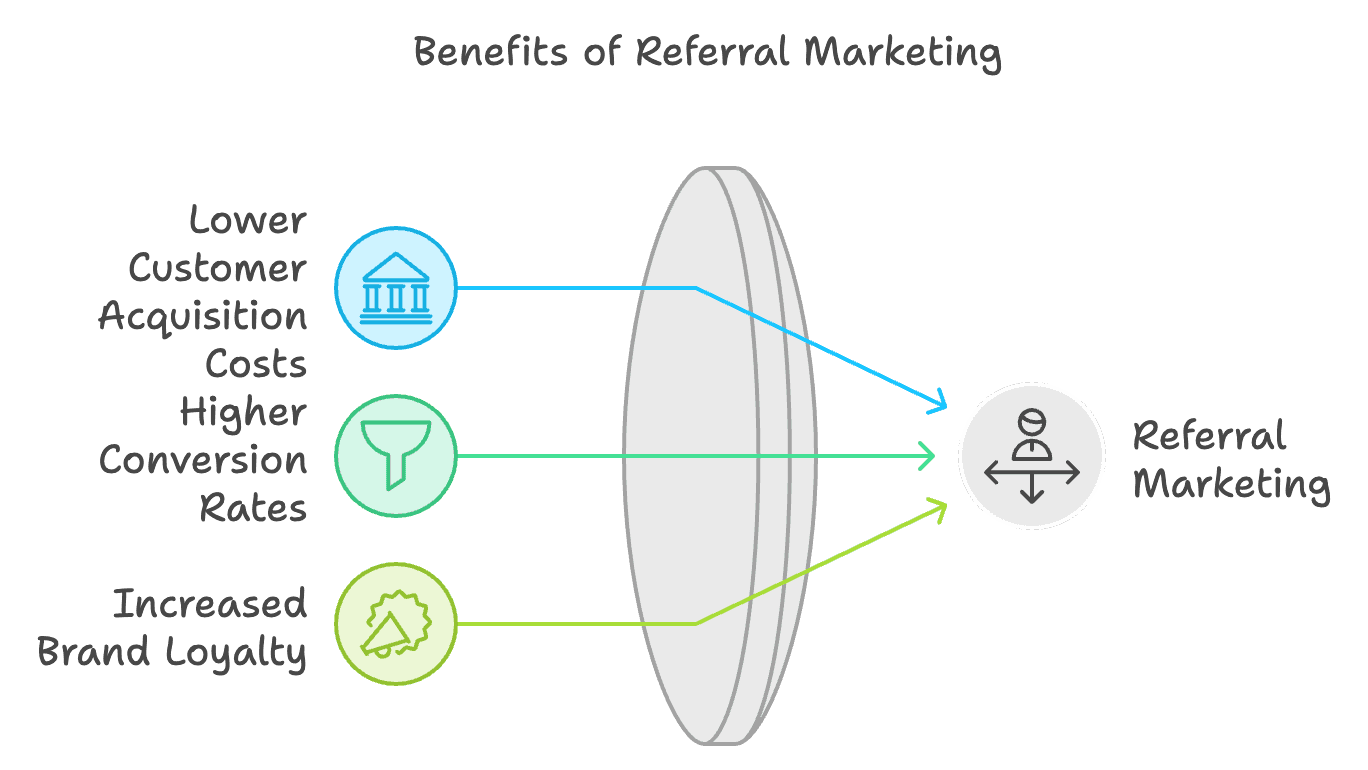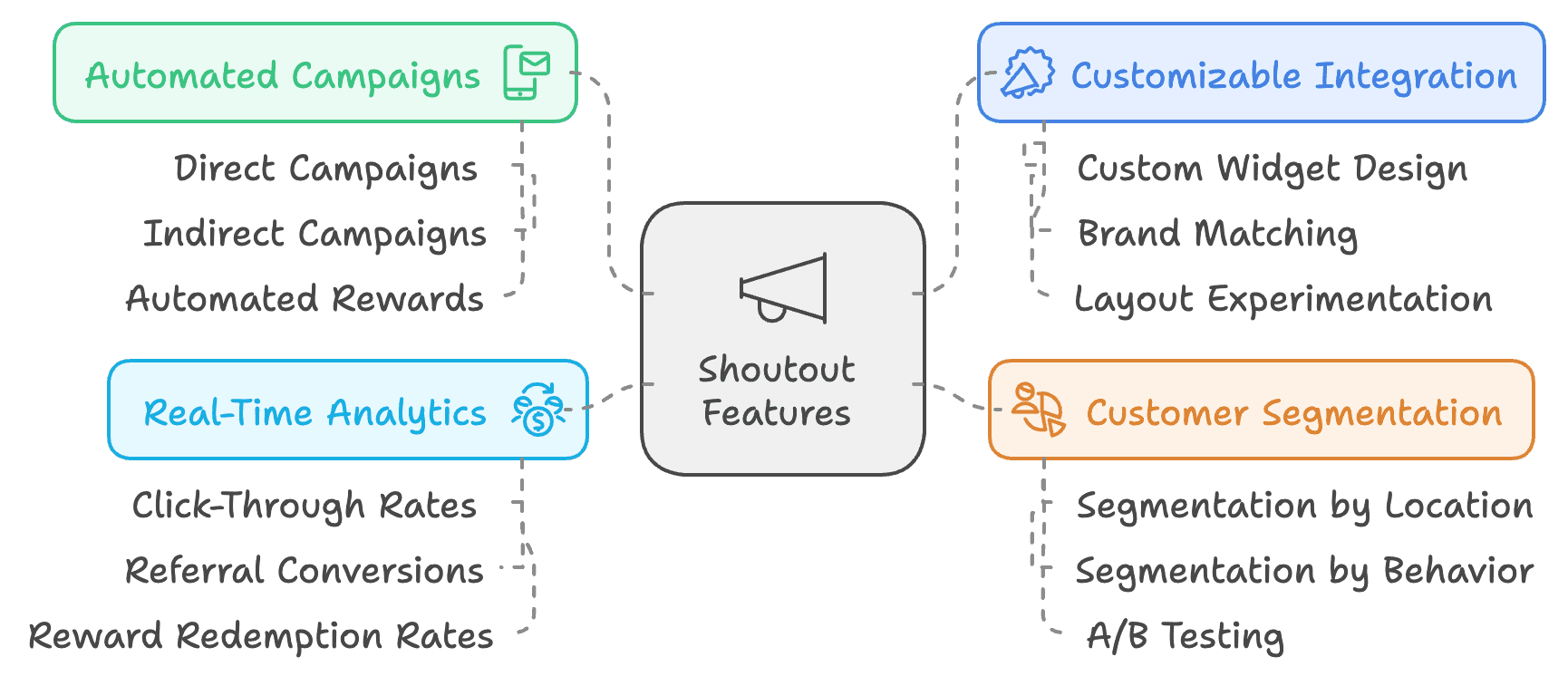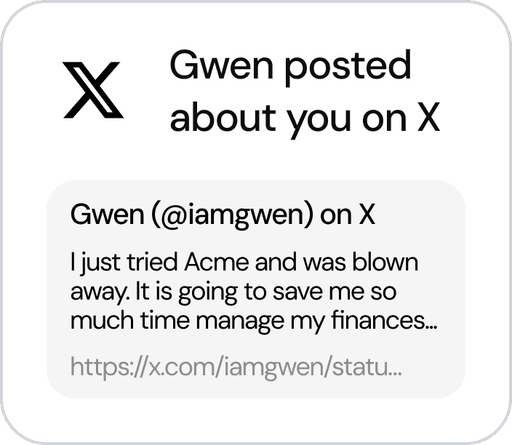Nov 8, 2024
Introduction
In today’s competitive market, referral marketing is emerging as one of the most reliable ways to drive sustainable growth. Whether you’re a small startup or a large corporation, tapping into your existing customer base to generate new leads is a highly effective strategy.
Businesses in 2025 must prioritize referral marketing strategies to stay ahead. Traditional advertising methods are losing their impact as customers increasingly trust recommendations from their peers. Research shows that 84% of consumers trust recommendations from friends and family more than any form of brand advertising (source).
Referral marketing taps into this trust, giving businesses a scalable way to generate new customers. By crafting effective referral marketing strategies, companies can remain top-of-mind for satisfied customers, motivating them to share their positive experiences. This approach not only expands brand reach but also drives conversion rates since leads generated through referrals are more likely to convert.
In this blog, we will explore the best referral marketing strategies for 2025, covering both direct and indirect referrals, best practices, and the tools needed for success.
What is Referral Marketing?
Referral marketing is a strategy that incentivizes customers to refer new clients. It involves encouraging satisfied customers to share their experience with friends, family, or colleagues in exchange for rewards like discounts, store credits, or exclusive offers.
Types of Referral Marketing:
Direct Referrals: Customers share personalized links or codes with friends via email, messages, or in-person conversations in exchange of some reward.
Indirect Referrals: Customers promote your brand passively, for instance, by posting about their experience on social media, writing reviews, or sharing user-generated content which may or may not have an incentive attached.

Why Referral Marketing is Effective:
Referral marketing’s effectiveness is rooted in the power of peer recommendations. According to Nielsen, 88% of consumers trust recommendations from people they know over any form of marketing (source). Unlike traditional advertising, which can be viewed as intrusive or unreliable, referrals are based on genuine satisfaction, making them a trusted source of brand endorsement.
Some key benefits include:
Lower customer acquisition costs: You only pay for results, making it more cost-effective than other marketing channels.
Higher conversion rates: Referral leads are often high-quality since they come from trusted sources.
Increased brand loyalty: When customers refer others, they tend to stay loyal to the brand themselves (source).
Top brands like Dropbox, Airbnb, and Tesla have successfully utilised referral marketing strategies to achieve exponential growth, demonstrating how powerful this approach can be.

Direct Referral Marketing Strategy
Direct referral marketing involves customers actively referring others through designated referral links or codes. This approach can be highly effective, particularly when businesses offer rewards to both the referrer and the referred.
Why Direct Referrals Matter:
Direct referrals allow businesses to leverage their most loyal customers, who are already satisfied with the product or service. Incentivizing these customers with tangible rewards encourages them to actively promote the brand. Research by Texas Tech University found that 83% of customers are willing to refer a business after a positive experience, but only 29% actually make the referral (source). This highlights the importance of structured programs that make referrals easy and rewarding.
How Direct Referrals Drive Business Growth:
By incorporating referral marketing strategies that focus on direct referrals, businesses can create a consistent and scalable growth engine. Direct referral programs are measurable, allowing companies to track the effectiveness of each referral and adjust their strategy accordingly.
For example, Dropbox famously achieved a 3,900% growth rate in just 15 months using a direct referral program. Their “give storage, get storage” incentive proved highly effective, illustrating that a simple yet valuable reward can lead to rapid growth (source).
Indirect Referral Marketing Strategy
Unlike direct referrals, which involve one-on-one recommendations, indirect referrals occur when customers promote your brand without a direct referral link. These often take place through social media posts, online reviews, or user-generated content, spreading awareness to a broader audience.
Why Indirect Referrals Are Becoming Crucial in 2025
As more consumers shift to digital platforms for shopping and communication, indirect referrals, especially via social media and online reviews, have gained significant importance. Indirect referrals are not only scalable but also have the potential to go viral, allowing businesses to reach a wider audience with minimal effort.
For instance, reviews on platforms like G2 & Trustpilot or social media posts on Instagram and TikTok can act as powerful endorsements. Customers love sharing their positive experiences, and brands that make it easy to do so can tap into this enthusiasm. In fact, 60% of consumers say they’ve shared a product or service they liked on social media (source).
Proven Referral Marketing Strategies
Referral marketing is not just a theoretical concept; it has been implemented by some of the most successful brands in the world to drive substantial growth. Below are a few strategies proven to be highly effective:
Dropbox’s Viral Growth Through Referral Marketing - Dropbox’s “give storage, get storage” program is one of the most famous examples of successful referral marketing. It led to a 3,900% increase in user base in just 15 months (source). This strategy allowed both the referrer and referred to benefit from the program, creating a win-win situation.
PayPal’s Double-Sided Incentives - PayPal’s referral marketing strategy offered cash rewards to both referrers and new customers, resulting in a staggering 1,650% growth rate in just one year (source). By rewarding both parties, PayPal created a highly motivating incentive system that scaled quickly.
Casper’s Social Media Reviews - Mattress company Casper successfully tapped into social media referrals by offering discounts for every new customer brought in through word-of-mouth. This approach not only generated buzz but also brought in high-quality leads who were more likely to make a purchase (source).

Best Practices for Referral Marketing
When designing your referral marketing strategies, it’s crucial to follow certain best practices to maximize the effectiveness of your campaigns. Here are a few proven tactics to ensure success:
Know When to Ask for Referrals - Timing is everything when it comes to asking customers for referrals. According to industry research, the best time to request a referral is when customers are happiest with your product or service, such as right after they’ve completed a purchase or left a positive review. Catching customers at the peak of their satisfaction increases the likelihood that they will refer your brand to friends and family (source).
Offer Strategic Incentives - Providing the right incentives is key to encouraging referrals. The incentive doesn’t always have to be cash—it can be a discount on a future purchase, a free trial, or exclusive access to new products. For example, Great Jones offers a dual incentive of a $15 discount for the referrer and a 10% discount for the referred, which has helped them drive significant growth (source).
Make Referrals Ease - Simplicity is critical for success. If the referral process is complicated, customers are less likely to participate. Implementing user-friendly referral tools ensures that customers can quickly share referral links via email or social media with just a few clicks.
Use Double-Sided Rewards - Offering benefits to both the referrer and the referred makes your referral program more enticing. Research from Nielsen indicates that double-sided incentives are particularly effective because they motivate both parties to take action (source).
Run A/B Tests for Optimization - Testing different referral offers can significantly enhance your campaign’s performance. Try out different incentives, messaging, and timing to see what resonates best with your audience. Analyzing the data and refining your approach ensures your referral program remains optimized for conversion.
Leveraging Shoutout for Smarter Referral Campaigns
Shoutout is a powerful tool for businesses looking to implement more intelligent and effective referral marketing strategies. By automating critical processes and providing deep insights into customer behavior, Shoutout makes it easy to scale referral campaigns with minimal manual effort.
Features of Shoutout for Smarter Campaigns:
Automated Direct and Indirect Referral Campaigns: Shoutout enables businesses to run both direct and indirect referral campaigns effortlessly. The platform automates the distribution of referral links, rewards, and payouts, allowing businesses to focus on other growth initiatives. Whether a customer is sharing a referral code with a friend or posting a review on social media, Shoutout tracks and rewards these actions automatically.
Customizable Brand Integration: Shoutout’s customizable widgets allow you to seamlessly integrate referral prompts into your website or app, ensuring they match your brand’s look and feel. This feature also enables businesses to experiment with different widget designs and layouts to find the most effective option for increasing conversions.
Customer Segmentation and A/B Testing: Shoutout offers advanced segmentation options, allowing businesses to tailor referral campaigns to specific customer groups based on factors like location, purchase behavior, or customer lifetime value. Additionally, Shoutout’s A/B testing capabilities help you optimize campaigns by comparing the performance of different referral offers, messaging, and designs (source).
Real-Time Analytics and Reporting: With Shoutout, businesses can access real-time insights into the performance of their referral programs. Detailed reports on metrics like click-through rates, referral conversions, and reward redemption rates provide valuable data for ongoing optimization.

Conclusion
In 2025, referral marketing will continue to be one of the most effective growth strategies for businesses. Whether through direct referrals, where customers actively share personalized referral links, or indirect referrals via social media and online reviews, this form of marketing leverages the power of trust and word-of-mouth.
By employing the right referral marketing strategies and using tools like Shoutout, businesses can automate and optimize their referral programs, driving sustainable growth with minimal effort. The key lies in offering the right incentives, automating the process, and continuously optimizing your campaigns through testing and data analysis.
Successful brands like Dropbox, PayPal, and Casper have shown that a well-executed referral marketing program can lead to exponential growth. By following best practices—like asking for referrals at the right time, offering double-sided rewards, and running A/B tests—your business can maximize the effectiveness of its referral campaigns.
Referral marketing is not just a short-term tactic; it’s a long-term strategy that can build a loyal customer base, reduce acquisition costs, and drive repeat purchases. As consumer behavior continues to evolve in 2025, businesses that prioritize referral marketing will be well-positioned for success.




